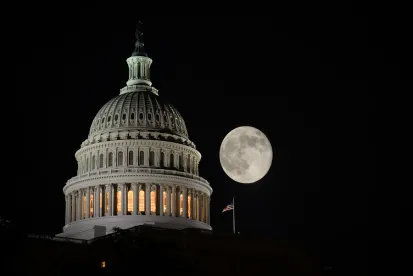Senate Republicans have introduced the Health, Economic Assistance, Liability Protection and Schools (HEALS) Act, a nearly one-trillion-dollar stimulus package comprised of a package of bills that includes the Continuing Small Business Recovery and Paycheck Protection Program Act (HEALS PPP).
If enacted, the HEALS PPP will (among other things) greatly expand the Paycheck Protection Program (PPP) enacted under the Coronavirus Aid, Relief, and Economic Security (CARES) Act and then subsequently amended.
Expansion of PPP Loan Uses Eligible for Forgiveness
The HEALS PPP would permit PPP loan proceeds to be used for the following expenses and remain eligible for forgiveness:
-
Covered operations expenditures (which include payment for any software, cloud computing, and other human resources and accounting needs).
-
Property damage costs (which include costs related to property damage and vandalism or looting due to public disturbances that occurred during 2020 that are not covered by insurance).
-
Covered supplier costs (which include expenditures to a supplier pursuant to a contract for goods in effect prior to February 15, 2020, that are essential to the current operations of the entity).
-
Covered worker protection expenditures (described as personal protective equipment and adaptive investments to help a borrower comply with federal health and safety guidelines related to the COVID-19 pandemic during the period between March 1, 2020, and December 31, 2020).
This revision greatly expands the permitted uses of the PPP loan proceeds and would be a particularly useful change for borrowers that do not have significant non-payroll expenses (such as rent) to reach full PPP loan forgiveness.
Change in Covered Period
Currently, the covered period for PPP loan is 24 weeks (or alternatively 8 weeks for borrowers who received their loans prior to June 5, 2020, and elected to use an 8-week covered period). The HEALS PPP would allow borrowers to select a covered period between 8 weeks after loan origination and December 31, 2020.
This change would allow borrowers to end the covered period once the funds are exhausted (but not before 8 weeks). Currently, unless borrowers are eligible to use a full-time equivalent (FTE) reduction safe harbor, they must wait until the end of the covered period to determine the loan forgiveness amount and are thus limited in their ability to make staffing changes during the remaining covered period if they want to ensure maximum forgiveness. This change would generally give borrowers flexibility to make staffing changes that may affect FTE counts immediately following the date the loan proceeds are exhausted.
Simplified Forgiveness Application
The HEALS PPP would significantly simplify the loan forgiveness application process for many borrowers as follows:
-
Loans under $150,000 would be forgiven in full upon the borrower’s attestation to a good faith effort to comply with PPP loan requirements and retention of relevant records for three years (subject to audit for fraud by the Small Business Administration, or SBA).
-
Loans between $150,000 and $2 million would require certification by the borrower that information contained in record retention was accurate and complete, and the retention of records and worksheets for three years. These loans would be subject to SBA’s current loan forgiveness procedures and would remain subject to SBA audit.
-
Loans over $2 million would be unaffected.
Group Insurance Payments as Payroll Costs
The HEALS PPP would clarify that employer-provided group insurance benefits other than health care benefits (e.g., life, disability, or AD&D) fall within the definition of forgivable payroll costs.
PPP Loan Cap
The HEALS PPP would cap any future PPP loans at $2 million.
Second PPP Loan Availability
The HEALS PPP would allow eligible PPP borrowers to receive a second PPP loan, referred to as a “second draw.”
To qualify, an entity must:
-
Meet the SBA’s revenue size standard, if applicable;
-
Employ not more than 300 employees; and
-
Demonstrate at least a 50% reduction in gross receipts in the first or second quarter of 2020 relative to the same 2019 quarter.
Publicly traded businesses, businesses in financial services that received a PPP loan in the first round of funding, and entities affiliated with entities in the People’s Republic of China would not be eligible for a second draw loan.
Generally, the second draw loan amount would be calculated on the same basis as the original PPP loans (up to 2.5 times average total monthly payroll costs in the one year prior to the loan), but would be capped at $2 million.
Borrowers would be eligible for loan forgiveness equal to the sum of their payroll costs, covered mortgage, rent, utility payments, covered operations expenditures, covered property damage costs, covered supplier costs, and covered worker protection expenditures incurred before January 1, 2021. The current 60/40 minimum spend on payroll costs in order to receive full forgiveness would continue to apply.
Increased Loan Amount Flexibility
A borrower who received a PPP loan that is eligible for an increased covered loan amount as a result of any interim final rule that allows for covered loan increases would be permitted to submit a request for an increase in the covered loan amount (regardless of whether the initial covered loan amount has been fully disbursed or the lender of the initial covered loan has submitted Form 1502 [a form required to be completed by lenders] to the SBA).
***
While the HEALS PPP provisions described above may not be enacted into law in their current form, they provide insight into the Republican priorities related to the PPP. Additionally, The Wall Street Journal reports that both sides of the aisle agree on the PPP expansion contained in the HEALS PPP. Accordingly, an expansion of the PPP, in some format, could potentially occur.





 />i
/>i

